HPE ProLiant RL300 Gen11 Management
HPE iLO has been around so long that the industry often uses “iLO” as a generic term for a BMC. Folks in the HPE ecosystem will be very familiar with iLO and in the RL300 Gen11 we get iLO 6.

This is not an ultra cut-down iLO 6 either. This looks very much like the data that is being presented from onboard sensors and the management controller on x86 servers.
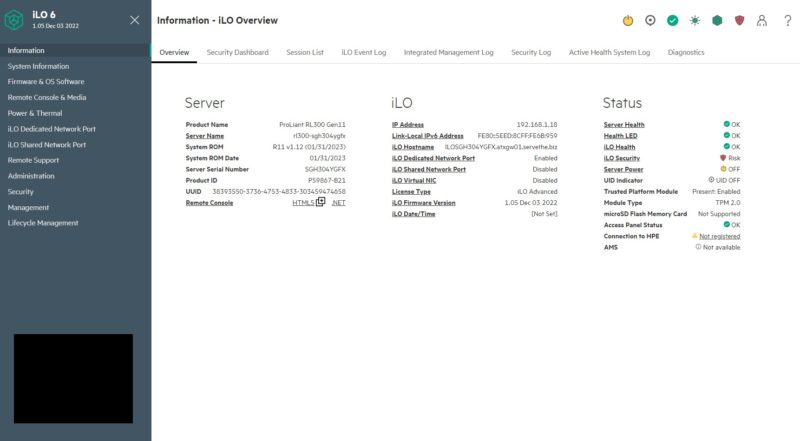
We get familiar features like the HTML5 iKVM so one can manage the server remotely.
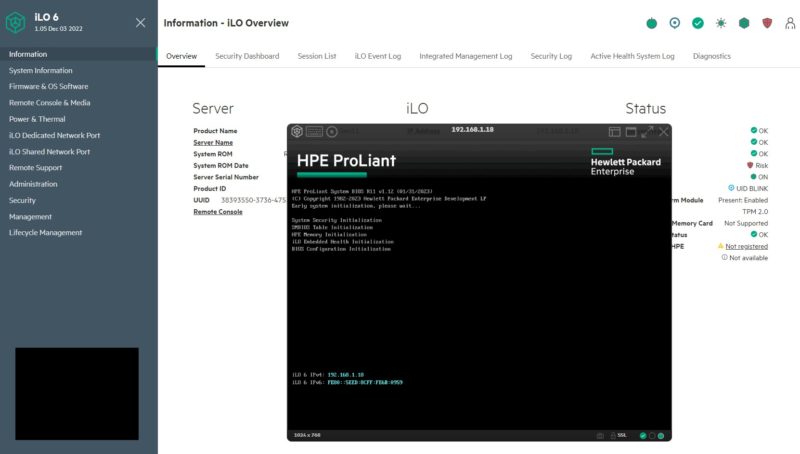
We even used this functionality to double-check the power numbers that we were seeing form the unit since even power supply information is brought into the management interface.
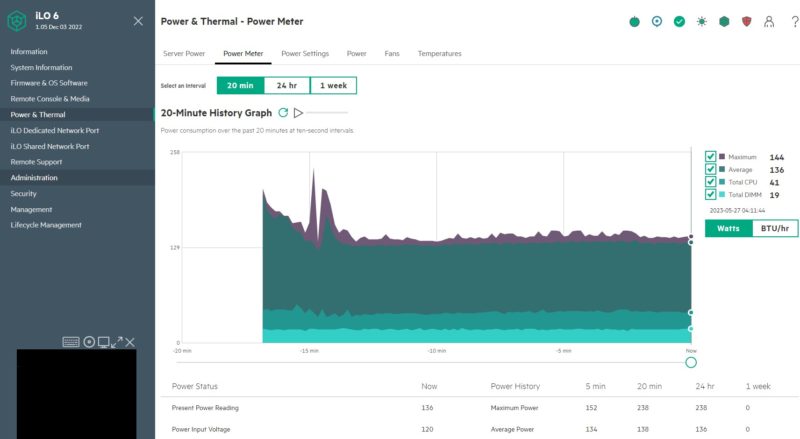
HPE iLO 6 continues HPE’s key focus on security and lifecycle management. One of the more unique features in the industry is that one can utilize a decommission feature to secure erase the system readying it for recycling or reuse.
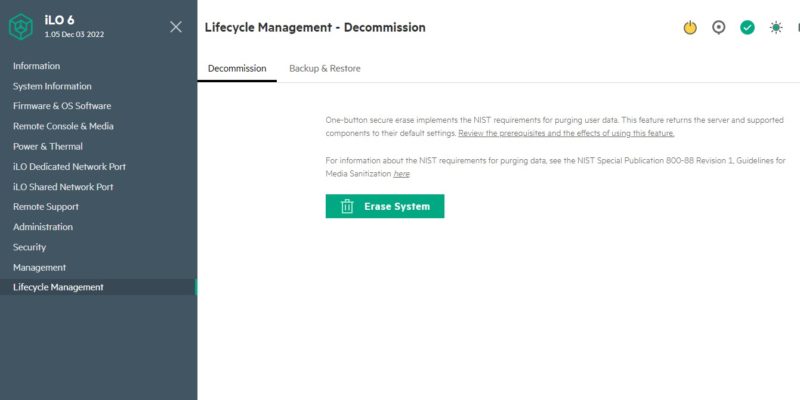
Overall, this is what folks should expect from a HPE server that is part of the ProLiant line. Many deploying cloud-native servers will want more standardized cloud management instances. At the same time, if a HPE customer wants to add a cloud-native Arm processor, at least the management interface will be the same as they are accustomed to.
Next, let us talk about performance.
HPE ProLiant RL300 Gen11 Performance
We have looked at the performance of the Ampere Altra Max in many contexts. Ampere’s marketing usually focuses on the performance of the chip compared to its x86 competitors. An easier way to estimate performance in most tasks is to think of two Ampere Altra cores as equivalent to an Intel Xeon core. Ampere’s focus is more to provide a sufficient vCPU performance level (with some extra margin) for a cloud service provider’s requirements. Since we have reviewed many servers with Ampere Altra the next question is really how the Ampere Altra Max performs compared to others that we have reviewed.
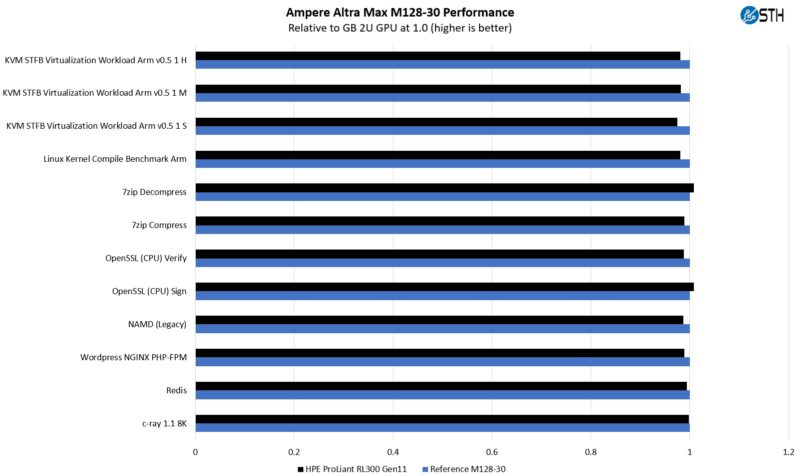
Here we got a bit lower performance than we did with our reference Ampere Altra Max and NVIDIA A100 platform, but it was a minor difference. We would not tell a HPE customer to seek a solution from another vendor based on what we saw performance-wise. Also, Ampere uses the RL300 internally as a testing platform, so that should help the quality of the system over time. It is an important aspect of adopting a new architecture that the performance is right and that there will be others looking for potential bugs to increase the overall quality of newer platforms.
Next, let us get to power consumption.




Nice review
“Having a major US server vendor sell Ampere Altra-based servers is great and it shows a willingness to listen to its customers”
Do enterprise customers really want ARM chips. They are usually more conservative than hyperscale customers and cost benefits have to be bigger to make them choose ARM servers.
That’s a great review. I’ll share it with our team. We aren’t a huge customer $20-30m in annual spend, but we’ll at least look at these for a small cluster this year to try.
It’s funny. Dell tried coming into our account with IDC and some white paper recycling bin collateral. They still haven’t had the ah ha that we read STH but we don’t look at that garbs.
2 things I found kind of confusing.
1) What do Storage Subsys failures have to do with Screws?
HPE replacement drives already come with caddies, so you aren’t swapping bare drives in/out of the caddy anyway, so why does a screw-based design matter?
2) You mentioned the Dell XE9680, did they not have such a machine before?
HPE has had the Apollo 6000/6500 and now the Crazy XD600 all with this same 2P/8SXM design.
Grrrr Spell Check – CRAY XD600
No mention if this meets HP certified supply chain requirements.
If not, this server will never see the inside of any datacenter where security is paramount.
The last time when one of the ARM vendors were bragging about how prevalent they were with some cloud operators, we checked and how were they used? As batch processing and storage managers. Any compute?
“No, we don’t use them for that internally, only if a client demands it…so we put a few on the wire to let people give them a run”.
What a farce.
Can’t find an actual listing with price. Maybe it is vaporware?
Could really use direct shopping link.
How about a HP Microserver version of this with the Ampere Altra 32 or 64 core CPU?